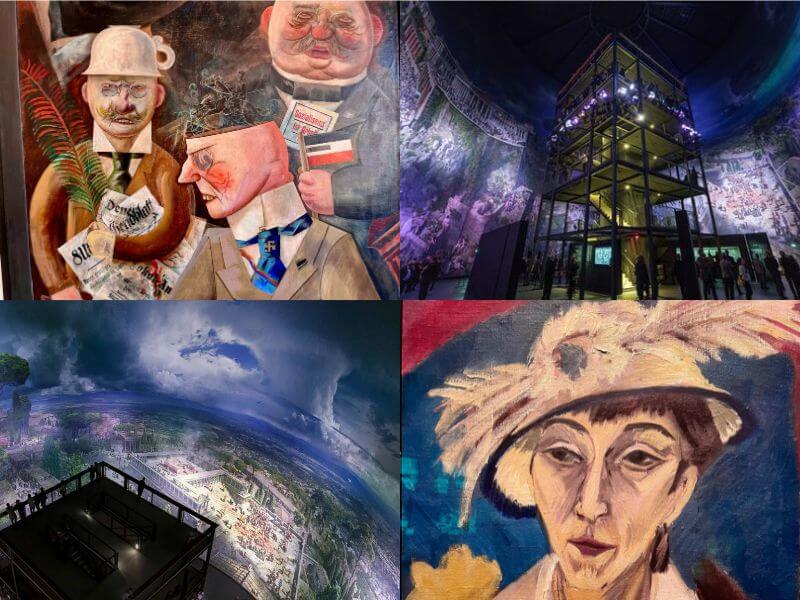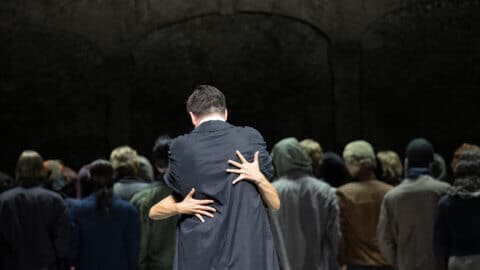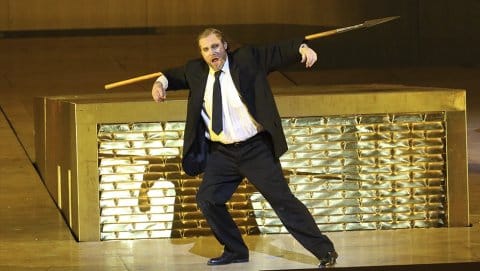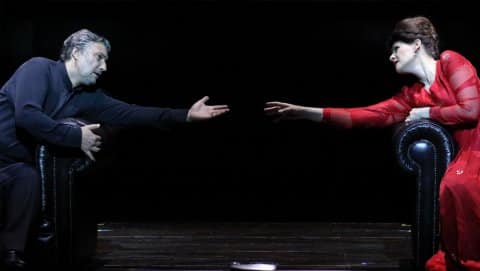ROSENKAVALIER • BERLIN STATE OPERA
★★★★☆☆

Photo: Ruth Walz
REVIEW OF THE ROSENKAVALIER: GLITTER WITHOUT SPARKLE
An understated set design with too little Viennese rococo, together with a strangely problematic casting, makes the acclaimed Austrian director André Heller’s staging of Der Rosenkavalier Berlin seem strangely unfocused and lacking in sparkle.
The soloists and orchestra are, of course, top-notch here at the Staatsoper Unter Den Linden. But it seems as if the production design searches in vain for footing and direction, ending up as pretty fragments of a big idea that never really comes together.
The internationally sought-after Strauss and Wagner specialist, the Finnish soprano Camilla Nylund, is unconditionally, vocally top-qualified, but in her dramatic appearance not an entirely convincing cast as the attractive cougar Marshal – who may well experience a decline in her social and erotic capital – but still.
Everything has its time is the theme that is the bittersweet focal point of the entire opera.
An inconvenient truth that is articulated through the Marshal’s torrid love affair with a younger officer, which ultimately ends happily in the arms of the play’s beautiful maiden – leaving the Marshal alone with the buck – and the memories.
All garnished with a variety of merry shenanigans, led by the gusty Baron Ochs – a self-absorbed abuser – opera’s answer to Harvey Weinstein – who allows himself to be rolled into this comedy of mistaken identity and misdirection of classic Rossini/Mozart buffoonery.
Ochs is absolutely well-shaped, with great tonal strength and dramatic energy from the perhaps too handsome German baritone David Steffens, who somehow seems neither creepy enough nor stupid enough to be even remotely believable as the fool in this Viennese classical soap opera, one of Strauss’s most popular.
Another problematic cast is the young officer Octavian in the title role, portrayed by Macedonian/Canadian mezzo Ema Nikolovska, who also doesn’t seem physically in tune with her seductive role, though her vocals seem convincing.
A waffled, Japanese-floral backdrop of the kind that became exotic at the turn of the century, and large blue set pieces resembling the inside of a suit jacket, with oddly round peepholes, set the scene for the erotic/comic adventures of the first act, while the second act is set in an elegant palm garden that sets the rococo dreams in motion, without quite reaching the goal, despite a brave array of ambitious costumes. The ‘Fuldemands Waltz’ is delivered with delightful swing and will be remembered as one of the highlights of a performance that generally suffers from a cluttered look.
Strauss wrote Der Rosenkavalier in 1911, just after the musical innovations Salome and Elektra, both of which are masterpieces in their own right, but also challenging in their modernity and amelodic tonal language.
With Der Rosenkavalier, he wanted to create a kind of homage to Mozart’s operatic comedies and the world of yesterday that Stefan Zweig described so beautifully in his novel. And which, in the years of composition, was already heading towards the devastation of the world wars and the dismantling of Romanticism.
The mission succeeded, but it is surprising today that, despite its musical qualities, Der Rosenkavalier is inflated to almost five hours in length, whereas 20 years earlier Puccini had shown that it is perfectly possible to create dazzling operatic art in half the playing time, resulting in a more effective audience experience.
Four stars for a somewhat understated, routine performance that, with tonight’s cast, doesn’t quite match Strauss’ audience favorite, which has been experienced stronger and more engaging in other productions with more bling and more sparkle.

BERLIN TIPS RIGHT NOW
Don’t miss Austrian/German multi-artist Yadegar Asisi’s fabulous 360-degree Pergamon Panorama, which brings the ancient metropolis to life in a gigantic rotunda on Museum Island, a mammoth work that you view from a 10-15 meters high stair tower as sound and image spin around you in a completely immersive 1:1 sense of being there.
Another good art tip is the Neue Nationalgallerie in Mies Van Der Rohe’s beautiful signature building near Potsdamer Platz. The current exhibition includes Gerhardt Richter and a number of sharp works from the Babylonian Weimar Germany of the 1920s and 30s.
After theater time, as always, Borchardt’s in Mitte is open until past midnight, serving oysters, bubbles and, right now, the delicious white asparagus, with a bustling incrowd ambience of VIPs and wannabes.




